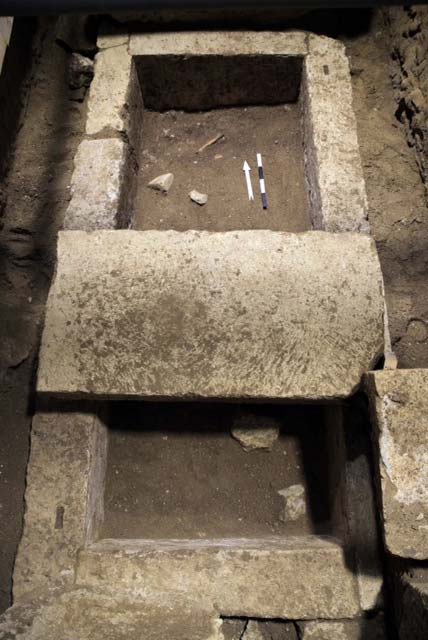
The skeletal remains of five people were found in an opulent Greek burial complex that dates to the time of Alexander the Great.
The discoveries raise more questions than they answer about who exactly is buried in the tomb in Amphipolis, a city in Greece's central Macedonia region..
"It is not possible to tell who these people were and certainly not from the first macroscopic analysis of the skeletal material," Christina Papageorgopoulou, an anthropologist involved in the excavation, and a professor at the Demokritus University of Thrace in Greece, said in an email. [See photos of the Alexander-era tomb excavation]
Opulent complex
Though archaeologists have been excavating the site since 2012, they only found the opening to the tomb in August 2014. In November of that year, archaeologists found bones beneath the floor of the third chamber in the 4th-century B.C. burial complex, which is located about 65 miles (105 kilometers) from the modern-day city of Thessaloniki.
The massive complex, filled with sphinxes, gorgeous mosaics and finely worked female statues called caryatids, was too luxurious to be financed by a single person and was likely the tomb of a "prominent person," the lead excavator, Katerina Peristeri, said in a statement.
The tomb has stirred widespread speculation about who may be buried inside, with hypotheses ranging from Phillip III, Alexander the Great's half-brother, to Olympias, Alexander's mother. Fans of the find have also created a virtual version of the Greek tomb that the public can explore.
Get the world’s most fascinating discoveries delivered straight to your inbox.
Surprising find
But the latest results reveal that at least five people were buried in the lavish tomb, according to the website TheAmpipholisTomb.com.
All in all, researchers uncovered 550 crushed and intact bones in the tomb, according to a statement from the Greek Ministry of Culture. Some of those bones belonged to animals, including long bones from horses, according to the ministry.
Fragments of a skull, arm, leg, hip and spinal vertebrae were found, and researchers determined these bones belonged to a woman who was at least 60 years old and about 5 foot 2 inches (1.57 meters) tall.
The archaeologists also found parts of the shoulders, hips, arms and leg bones that belonged to a man who was about 35 years old and 5 foot 6 (1.68 m) tall. His body bore deep knife wounds at the thorax, in his side, on his nape and the clavicle. The body was likely attacked after death, as the wounds had not healed at all, the researchers said.
Fragments of leg and arm bones came from a roughly 45 year-old man, who was 5 feet 3 inches tall (1.62 m) and had signs of on old, healed wound on his wrist.
The team also found a few jaw, skull and arm fragments from an infant, and nine partial bones from a cremated adult.
"We could identify with certainty the biological age and sex of the individuals, and I think the archaeological results could give in the future more information so that historians could perhaps identify the deceased," Papageorgopoulou told Live Science in an email.
Some have speculated the Amphipolis tomb contains the bones of Alexander the Great, who died in 323 B.C. in Babylonia. But this is unlikely. Though Alexander asked to be tossed into a river at his death, his generals carried his body back to Egypt. His final resting place remains an enduring mystery, Archaeology Magazine reported.
Follow Tia Ghose on Twitterand Google+. Follow Live Science @livescience, Facebook & Google+. Originally published on Live Science.

Tia is the editor-in-chief (premium) and was formerly managing editor and senior writer for Live Science. Her work has appeared in Scientific American, Wired.com, Science News and other outlets. She holds a master's degree in bioengineering from the University of Washington, a graduate certificate in science writing from UC Santa Cruz and a bachelor's degree in mechanical engineering from the University of Texas at Austin. Tia was part of a team at the Milwaukee Journal Sentinel that published the Empty Cradles series on preterm births, which won multiple awards, including the 2012 Casey Medal for Meritorious Journalism.


